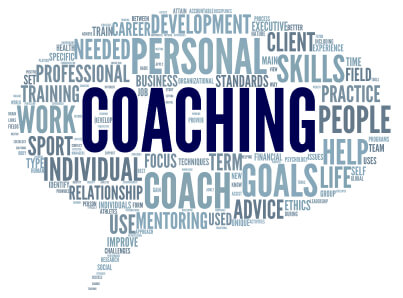 We all know that big business breakthroughs usually happen in teams. Unfortunately, precious few teams are high performing, building on team members’ energy and ideas to deliver game-changing innovation and exceptional results. Equally surprising is how little companies invest in team development versus individual performance management which further erodes the right team behaviors.
We all know that big business breakthroughs usually happen in teams. Unfortunately, precious few teams are high performing, building on team members’ energy and ideas to deliver game-changing innovation and exceptional results. Equally surprising is how little companies invest in team development versus individual performance management which further erodes the right team behaviors.
Companies are finally beginning to see the value in team development and team coaching is viewed as the most effective approach. But don’t assume that simply hiring a coach to work with a team will be a panacea. There are five keys to ensure success of a team coaching project which are explained below:
1.Hire a team of two coaches. In working with teams, it is critical to engage a pair of coaches for a few reasons. First, while one coach is talking the other can be listening and watching the team closely. Second, it is important that team members have chemistry with a coach who works with the team . This is much more likely if there are two choices. Third, because team coaching issues can arise at any time between team meetings, it is important that a coach be available on very short notice. This can be assured by using a two-coach program. Finally, team coaching is complex, requiring creativity and analysis beyond the level of any single coach’s expertise.
2.Make sure one of the coaches has led successful executive teams. I can’t overstress just how important this is. Probably the most critical attribute of a successful executive coach is business acumen targeted to the coaching objectives. In the case of team coaching, business acumen requires significant team leadership experience. Put another way: you want a coach who once sat in your shoes.
3.Have your team leader work with the coaches to co-create the team’s coaching goals. The leader and the coaches need to have strong chemistry and mutual respect. The time to gauge this is before the leader involves the full team. It’s both embarrassing and a big setback for a leader to begin a team coaching process only to discover that he can’t trust the coach or that they lack the right chemistry. These things can be tested in the planning process where the leader and the coaches collaborate on the goals and agree on process. If the chemistry isn’t right, it will become apparent before the team becomes involved.
4.Use the Four Groups 4G assessment to measure team relationships.. Using the Four Groups 4G assessment to measure relationship strength among respective team members will quickly show which relationships on the team are naturally strong and which are naturally challenging. This information will be invaluable in coaching the team. Often team members with weaker relationships will have roles and expertise requiring them to work together. If they know their challenges in advance and are coached on how to interact with each other, things will go more smoothly, despite the lack of inherent relationship strength. Conversely, where two teams members have a strong relationship, Four Groups 4G will show them how to maximize the business value of their interactions.
5.Begin with a one-day pilot. This step is critical. The leader should not ram the team coaching approach down team members’ throats. Start with a one-day team building offsite facilitated by the coaches, and see how it goes. If it goes well, the stage will be set for the team to agree to work with the coaches more extensively. If it does not go well, the leader should rethink his choice of coaches and, perhaps, the composition of his team. But a failed team coaching engagement will have been averted. Then later, there will be an opportunity to work with new coaches who show the ability to work well with the team.
Using team coaching is the best approach for creating high performance teams. But, do it properly, following these five keys to success.






